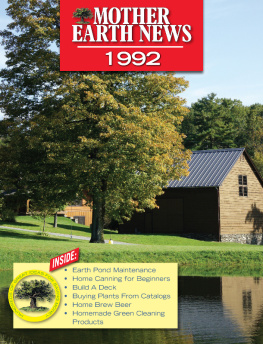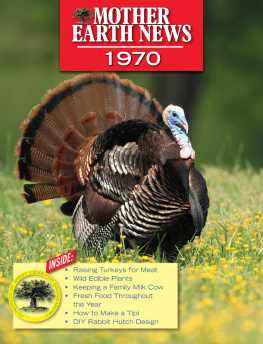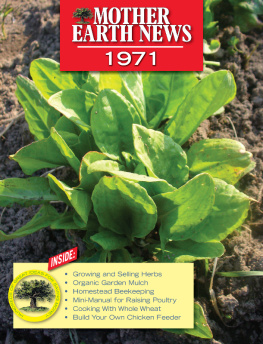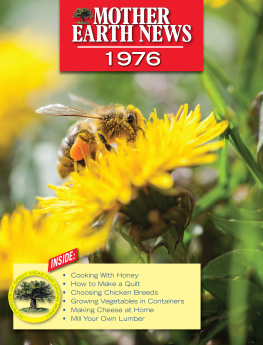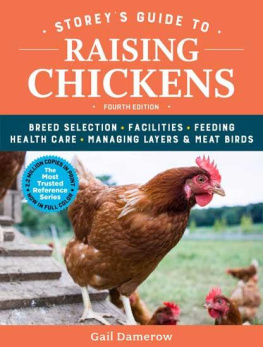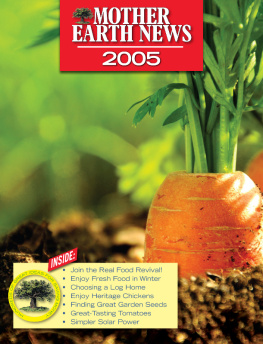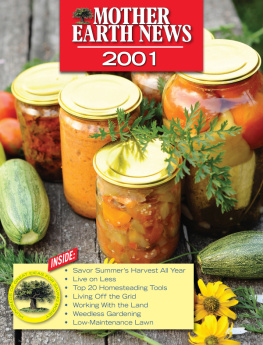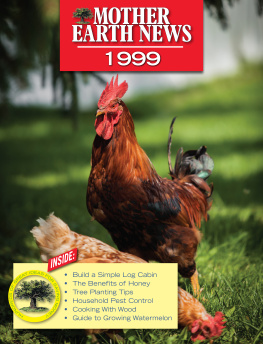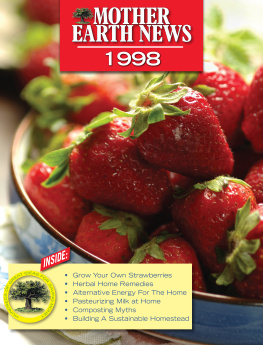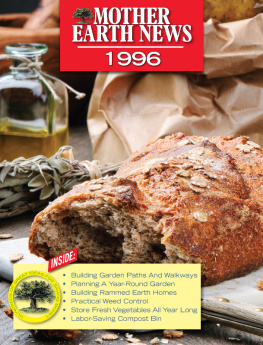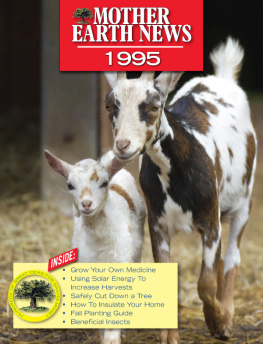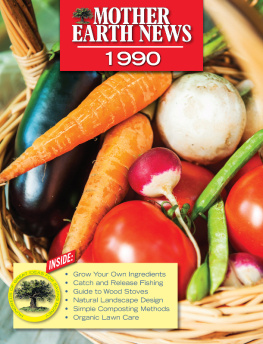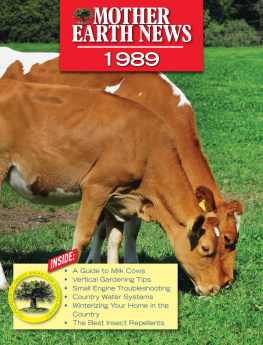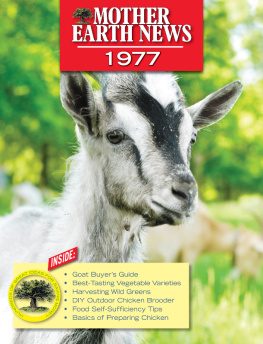Mother Earth News - Mother Earth News 2015
Here you can read online Mother Earth News - Mother Earth News 2015 full text of the book (entire story) in english for free. Download pdf and epub, get meaning, cover and reviews about this ebook. year: 2015, publisher: Mother Earth News, genre: Science / Home and family. Description of the work, (preface) as well as reviews are available. Best literature library LitArk.com created for fans of good reading and offers a wide selection of genres:
Romance novel
Science fiction
Adventure
Detective
Science
History
Home and family
Prose
Art
Politics
Computer
Non-fiction
Religion
Business
Children
Humor
Choose a favorite category and find really read worthwhile books. Enjoy immersion in the world of imagination, feel the emotions of the characters or learn something new for yourself, make an fascinating discovery.
- Book:Mother Earth News 2015
- Author:
- Publisher:Mother Earth News
- Genre:
- Year:2015
- Rating:5 / 5
- Favourites:Add to favourites
- Your mark:
- 100
- 1
- 2
- 3
- 4
- 5
Mother Earth News 2015: summary, description and annotation
We offer to read an annotation, description, summary or preface (depends on what the author of the book "Mother Earth News 2015" wrote himself). If you haven't found the necessary information about the book — write in the comments, we will try to find it.
Mother Earth News 2015 — read online for free the complete book (whole text) full work
Below is the text of the book, divided by pages. System saving the place of the last page read, allows you to conveniently read the book "Mother Earth News 2015" online for free, without having to search again every time where you left off. Put a bookmark, and you can go to the page where you finished reading at any time.
Font size:
Interval:
Bookmark:

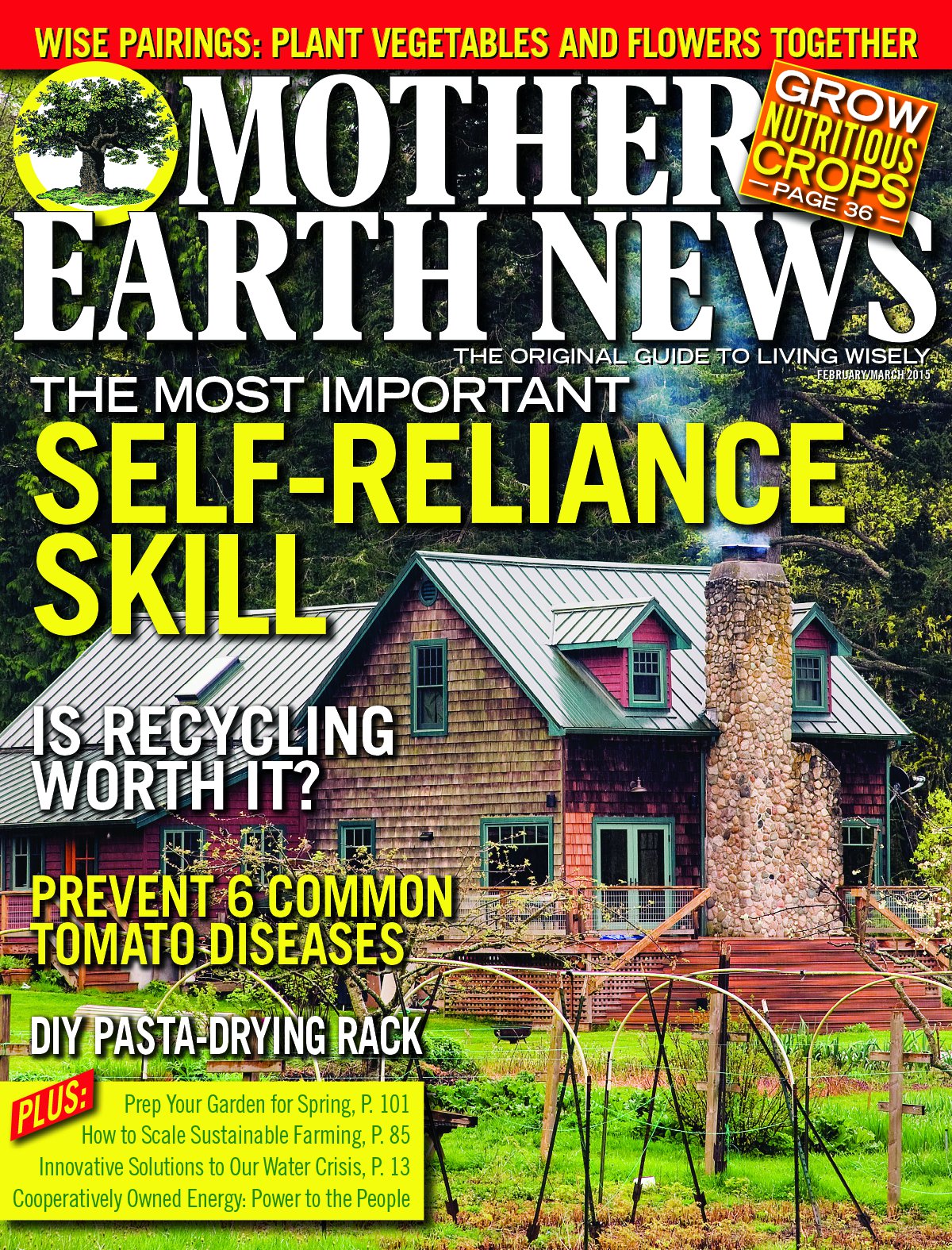
Those of us dedicated to sustainable agriculture have distinct ideas about how to define it and what it should look like. We use adjectives like soil-building, water-conserving, air-cleansing, people-respecting, nutrient-enhancing and animal-honoring. Adhering to these attributes is a great litmus test for Earth-friendly agriculture.
But Id like to add another measure to the mix: scalable. Some 25 years ago, when sustainable farming folks had first begun asking me to speak at their conferences, Id finish with my song and dance, and inevitably the first question would be, Thats dandy, Joel, but does it scale up?
It was a fair question. At that time, Polyface Farm was 100 acres of open land that my parents had owned since 1961. They had worked outside jobs to support the farm, but I was determined to make my living farming full time. We were serving only about 200 families with products from our animals. Our family was the only labor force. We didnt make deliveries, serviced no restaurants, and required customers to order in advance and drive out to the farm for scheduled pickups.
It was quaint, family-scale, highly profitable and more fun than we could have imagined. A lot of work, yes, but it was noble, sacred, family-centric work. The past 25 years have brought enormous changes. These days, when I finish a presentation, the first question most often is, Thats dandy, Joel, but does it scale down?
What happened in those 25 years to change the question? Our farm grew, thats what happened. Today, we lease nine properties, manage 1,200 acres of open land, and graze pigs on acorns and other goodies in the forest, which leverages an additional 800 acres. Were running nearly 1,000 head of cattle, 1,000 hogs, 4,000 laying hens, 25,000 broilers and 2,000 turkeys. Our 20-person staff includes delivery drivers, marketers, accountants, subcontractors, apprentices, apprentice managers, interns and office workers, and we now serve 5,000 families, 50 restaurants and 10 retail outlets.
I dont provide this information to brag, but simply to highlight the growth weve experienced and underscore the scalability of just one sustainable farming operation. We didnt envision this. We never had a business plan. It just happened.
But now that were big enough to be considered a business, beginning farmers and folks with smaller acreages are looking at our model and asking, Where do we fit in? Ive spent some time pondering the whole matter of scale, and Ive concluded that scalability is indeed a benchmark of successful sustainable agricultural prototypes. The beauty of our farms growth is that it has required almost no borrowed money and the infrastructure is still worthless, at least to a bank.
Let me explain. My first portable henhouse, which weve dubbed the eggmobile, was a 6-by-8-foot rectangle with 3-foot-tall walls, mounted on bicycle wheels, and it housed 50 laying hens. I built this movable chicken coop out of scrap for a total investment of about $100. It was light enough to push around by hand. Electrified poultry netting had not yet been invented, so I built 4-foot-tall and 10-foot-long poultry-netting panels out of quarter-inch steel rod. Creating two sets of three eggmobiles allowed me to set them up in a hexagon pattern.
That project worked so well that the next year I redesigned the henhouse to mount on the tractors three-point hitch. Connecting the eggmobile and tractor allowed me to run the chickens behind the cattle and let them range freely. The birds tore into the cow manure, spreading out the patties and eating all the fly larvae. I knew I was on to something.
Because hooking the henhouse up to the three-point hitch was laborious, the following year I built a bigger coop and I mounted it on a mobile-home axle. With 100 birds in there, I thought I had arrived at the big leagues. But the year after that, I decided to be more efficient, build more houses, and increase the number of chickens. Besides, customers loved the eggs and were asking for more.
Today, we run these eggmobiles in pairs, hooked together, with each holding 400 birds apiece, creating flocks of 800 laying hens. We have six pairs of eggmobiles. Some are not quite as big and only house a 500-bird flock. After supplemental feed costs and labor, the largest expense is the hens, which cost about $5 apiece to replace with new pullets. We sell our eggs for $4.50 a dozen and net about $1 after labor and expenses.
The eggmobile model was profitable as a tiny backyard prototype because the infrastructure cost next to nothing. The scheme could scale up with cash flow from the enterprise because the subsequently larger eggmobiles were also cheap and could be added as demand grew. We didnt need to build the whole fleet in a day; we could add more of our movable coops as our skills and the market expanded.
Contrast this model with that of industrial agriculture. If I wanted to raise eggs for the commodity market, getting started would require roughly a million-dollar investment for a confinement facility. Even if we set aside for a moment the odors, effluent, animal-welfare issues or any other such considerations, the industrial model carries an enormous entry-level price tag, which prohibits most people from entering the business, and requires farmers to take on debt. That model does not scale down you cant start small.
A production model that is efficient or functional only at a large scale excludes low-capital beginners, which makes it exclusive even elitist. I think a good model is an Everyman model, or what I refer to as a whosoever will, may come model.
On the other hand, if a production model functions well only at the tiny end of the scale, it loses credibility as a viable business. While spare-time production is wonderful, limiting an enterprise to this scale dooms it to the periphery of agricultural systems. Though Im a big fan of tiny and lots of tiny producers can add up to serious production volume we also need systems that can offer full-time salaries and support many families well.
The capacity to expand or contract the size of a sustainable farming business must be seamless up and down the scale in order to make room for any willing, knowledgeable participant to take up the profession. The industrial agriculture model presents itself as the only economically viable approach to feeding large numbers of people. We disagree with that assumption, but to prove it, were going to have to expand our capacity without breaking the bank and sending sustainable producers into debt. Here are my recommendations, based on commonalities among the scalable systems Ive observed.
Portable infrastructure. This includes shelter, water and fencing as well as specialized equipment necessary for your farming enterprise. Portable systems tend to be cheaper, and can be placed anywhere, whether the land is owned by the farmer or leased from a neighbor. Eliminating the cost of purchasing land will go a long way toward enabling entry into farming. This flexibility encourages more farmer-to-farmer collaboration.
Do-it-yourself infrastructure. Possessing basic construction, fabrication and welding skills can transform an otherwise capital-intensive project into a low-budget venture. The difference in upfront costs between doing these essential tasks for yourself or hiring them done can make or break profitability.
Font size:
Interval:
Bookmark:
Similar books «Mother Earth News 2015»
Look at similar books to Mother Earth News 2015. We have selected literature similar in name and meaning in the hope of providing readers with more options to find new, interesting, not yet read works.
Discussion, reviews of the book Mother Earth News 2015 and just readers' own opinions. Leave your comments, write what you think about the work, its meaning or the main characters. Specify what exactly you liked and what you didn't like, and why you think so.


